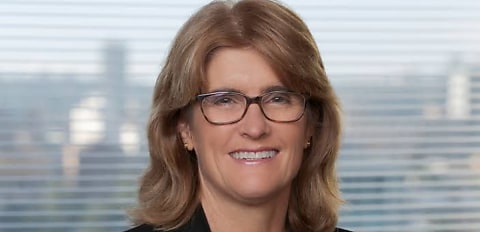The Reserve Bank of Australia’s (RBA) Plan A is to remain “data driven”, meaning the bank will maintain its neutral stance in anticipation of the next instalment of quarterly inflation data.
“If we think we’re on the narrow path, we can stay basically pretty much where we are, not ruling anything in or out,” Michele Bullock said.
But a rebound in inflation would prompt the bank to raise interest rates again, the governor conceded, referring to this as Plan B.
“If it turns out that inflation starts to go up again or it’s much stickier than we think, we’re not getting it down, then we won’t hesitate to move and raise interest rates again,” Bullock said.
Similarly, weaker-than-anticipated data would compel the RBA to cut rates.
“In contrast, if it turns out that the economy is much weaker than expected then that puts more downward pressure on inflation, then we’ll be looking to ease,” Bullock said just hours before the Australian Bureau of Statistics (ABS) released the March quarter GDP data.
Reflecting on the economy, Bullock said it is “very weak” as a result of higher interest rates. But she did not agree with KPMG’s chief economist Brendan Rynne who, this week, said that Australia is “a heartbeat from recession”.
Elaborating on the central bank’s processes, Bullock explained that the “sweet spot” the RBA is looking to reach is one where supply and demand are in alignment and inflation is on a steady decline towards the bank’s 2–3 per cent target range.
“The soft landing we’re looking for is that demand comes back into line with supply, growth slows enough to deliver that, and we end up with employment still growing, maintaining a lot of the gains in the employment that we’ve had, and inflation coming back to target gradually,” the governor said, maintaining that the bank is “still on the narrow path”.
At the moment, the RBA is forecasting inflation will enter its target range by the end of 2025 and reach the midpoint of that range by 2026.
“But there’s lots of uncertainties on both sides,” Bullock said, alluding to a “blip” in inflation seen in the recent monthly inflation prints.
“I think what we would say about the monthly figures is that it’s coming down less quickly than we thought it would, it’s coming down more slowly than we thought it would, but we really need to wait and get a comprehensive read to see if that confirms what we’re seeing in the monthly figures.”
The challenge for the RBA, she added, is that the quarterly print is only available a limited number of times per year.
“It’s therefore quite difficult to read momentum into quarterly figures because you only get one, obviously, every three months,” she said.
Looking ahead to the next inflation print, Bullock said that while it’s “important”, it’s also not “the single-most important thing”.
“It is not the single-most important thing, because there is a lag, there are other things we’ll be considering, for example, some of the information we’ll get out of the national accounts, which will tell us where the economy is sitting,” Bullock said.
Bullock was also asked by Liberal senators whether the central bank would hike rates during an election campaign, to which she said: “I’m not speculating on any campaign periods, but the board will do what they think they need to do on inflation.
“The board will be driven by the data and the data will tell us if we need to move.”
Mortgage rates to continue climbing
Along with Bullock’s assessment, RBA assistant governor Christopher Kent flagged that the 13 interest rate hikes over the last two years have not yet taken full effect on all mortgage holders as a small group is still expected to roll off fixed-rate loans into higher variable rates.
According to the assistant governor, only “about 80 per cent” of the increases to the cash rate have fully passed through.
Kent stated that those mortgage holders have “more or less” been able to manage these changes.
“[The] fixed rate mortgages rolling off doesn’t now look much different from a variable rate mortgage, in terms of their ability to make payments,” Kent said.
“Most of that will finish this year, and that may add another 20 basis points or so to the average outstanding mortgage.”
“Vigorously” competing banks have also eased the burden of rate hikes on mortgage holders, according to Kent.
“Those who are able to either change banks or negotiate with their banks have been getting better deals than they might otherwise have gotten,” Kent said.
[RELATED: GDP at slowest growth rate since COVID-19]
